The place that is sometimes called “England’s only desert” can be reached by a miniature railway line that runs to a nuclear power station on one of the largest expanses of shingle beach in Europe.
Across the pebbled coastal plain, a tiny, gleaming steam engine chugs bravely and ridiculously past weather-beaten huts and abandoned fishing boats, to deposit its passengers near the foot of a black lighthouse. The power station hums inland, too brutally large to understand.
Ahead, the shingle foreshore lilts towards the sea. Sections of boardwalk lead visitors out across the stones, past rusted bits of winching gear and outcrops of sea kale; in summer, the pebblescape is red with poppies. Stepping off the wooden boards, stones crunch with every step. The shingle is composed of flint. If you bring your boots down hard, your footsteps might strike sparks.
The English desert of Dungeness draws a million people a year, pilgrims to its weirdness. Why go to the Sahara when you can visit Kent? The headland noses out from the south-east coast towards Boulogne-sur-Mer, 30 miles across the Channel. It is out on a limb, on its way to nowhere.
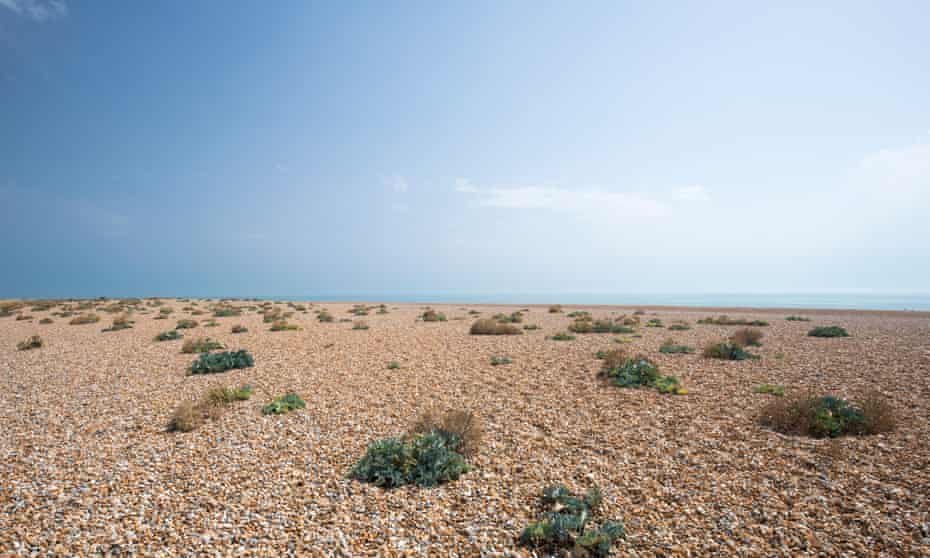
We did not arrive by train, my partner Caroline and I, but by cycling eastwards along the sand-duned coast from Rye, inland through the town of Lydd, and then back towards the sea. Despite the cloudless, glaring sky, what felt like a gale-force wind tore against us all the way, dragging the breath from our lungs if we faced directly into it, so that we progressed like drunks, teetering and gasping.
At times the wind was so intense that it almost forced us to retreat, or into the shelter of barriers raised against the sea, but soon there was no shelter left. Ahead lay only pebbles. The emptiness seemed immense and we became extremely small. Distances were hard to gauge, proportions misaligned.
We stayed for a week in Dungeness in a hut – it belonged to the family of a friend – and spent our days walking the foreshore and our evenings watching the sun collapse in a wobbling orange ball, like a shot-down UFO. The sky was not the English sky but the sky of a greater continent, with a clearer quality of light. Our discoveries got stranger. Astonishingly for what looks, at first glance, like a desolate place, this headland provides a habitat for a third of Britain’s plant species, many of them rare; the ceaseless sifting of the sea sorts the pebbles into troughs and ridges that trap rainwater, creating small pockets of life.
Sculptures of driftwood and scrap metal protrude along the shore, the creations of artists drawn here by the legacy of Derek Jarman, the avant garde film director who coaxed a garden from the stones. And in one strange spot offshore, hidden pipes discharge hot water from the nuclear power station (actually two nuclear power stations, Dungeness A and Dungeness B) into patches dubbed “the boils”, where the warmer temperature attracts tiny sea creatures that, in turn, attract shoals of fish and wheeling seagulls. The wastewater is – apparently – clean, but it is hard to overcome suspicions of mutant energies.
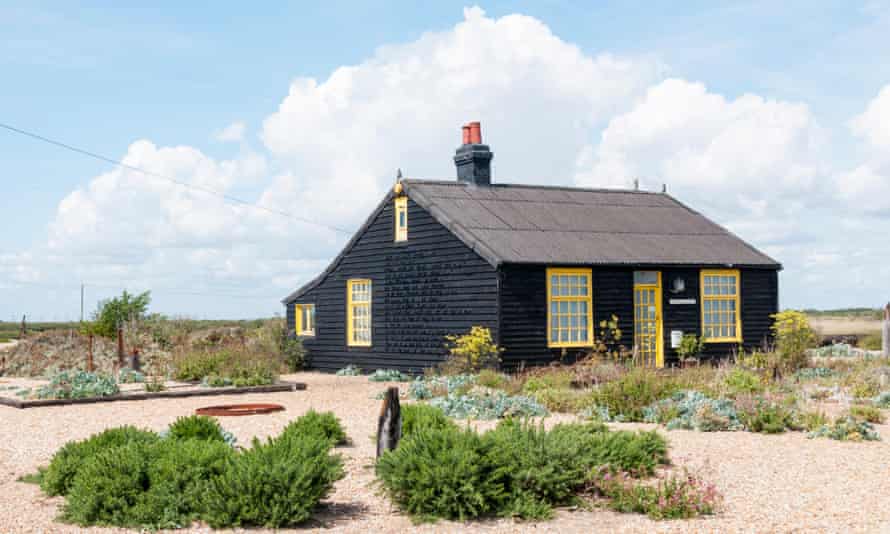
One evening at sunset, with crimson light pouring over a scene of wind-whipped marram grass and the skeletons of boats, I experienced a moment of dislocation; suddenly I was not in England but in a North American wasteland, some time in an imagined future that felt dreamily familiar, surrounded by the flotsam and jetsam of a collapsed culture. The light; the rusted metal cables; the plants like disfigured cabbages; the presence of the power stations with their blinking lights; the landscape’s sheer outlandishness: it was briefly enough to jolt me free from time and place. “Outlandish” comes from the Old English ūtland, which means foreign country, and that was this desert’s uncanny effect. It made my country foreign.
Dungeness – disappointingly – is not actually a desert. To qualify as a true desert an area must receive less than 250 millimetres of precipitation a year. Dungeness gets a fair bit more than that: the sea kale, sea holly, orchids, vetch, broom, sorrel, sage, bugloss, poppies and 600 other species of plant are proof of that. In 2015 the Met Office, officially refuted the myth of the shingle’s desert status.
Nevertheless, for a moment there, I found myself transported.
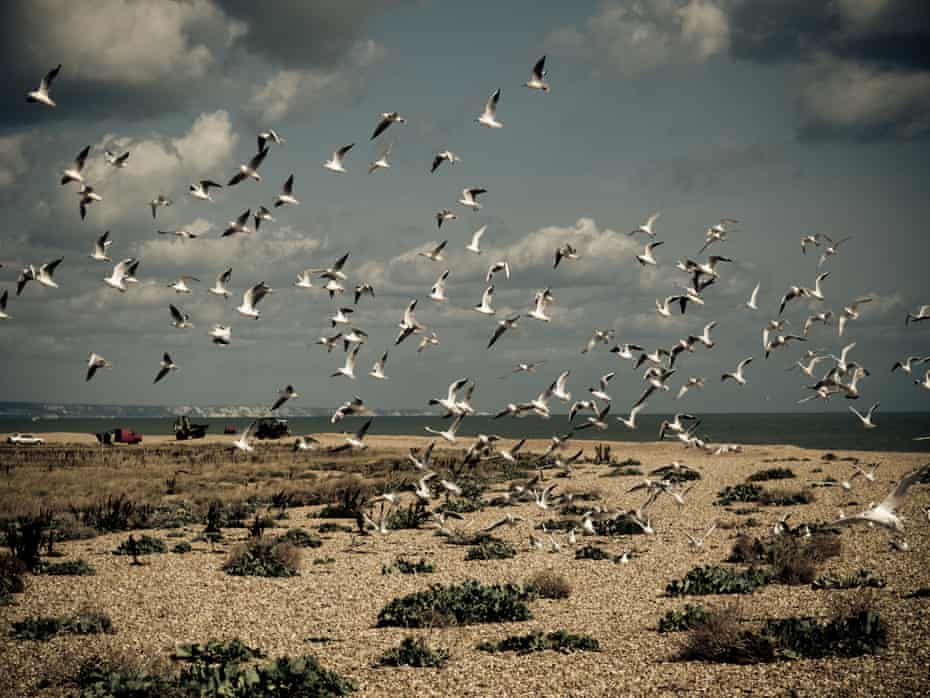
After our week in Dungeness, the experience stayed with me. It had been like falling into the clear light of another world, a place that was “altogether elsewhere”, like the line in that Auden poem that had always tugged at me. But it was not elsewhere, not far away at all. What was it about the thought of a desert – even a not-really desert – nestled in the south-east corner of England that was so exhilarating?
England should not possess a desert, or anything remotely resembling one; the hint of such a thing felt dangerous and subversive. Deserts surely belong in places that are remote and far away from this green and pleasant land, or from this over-civilised time. There should be no place for them here. And yet here one (almost) is.
As a travel writer increasingly aware of the damage that travel can do – mainly, of course, the chemical violence done to the stratosphere by flying – I was looking for transformative journeys that lay nearer to home. This was in 2019, and since then the pandemic has only drawn the horizons closer. Over the past year many of us have been seeking extraordinary things in the everyday, not from choice but necessity, and even as borders open again, this enforced focus on the local may change the way we travel for a long time to come. As lockdowns ease in some parts of the world, infection and death rates soar in others; between Covid-19 and climate change, the practicalities – and ethics – of travel are more fraught than ever before.
My previous books had been about walking and Europe, and in both I had experienced states of outlandishness. Often those states had not occurred in remote wildernesses but in close proximity to towns, roads and agriculture. This proximity somehow increased, rather than diminished, their magic. It seemed a version of the Celtic conception of the otherworld, which exists alongside our own, and can be accessed in certain locations, or in certain frames of mind. As the Welsh mystic Arthur Machen wrote of early-20th-century London: “He who cannot find wonder, mystery, awe, the sense of a new world and an undiscovered realm in the places by the Gray’s Inn Road will never find those secrets elsewhere, not in the heart of Africa, not in the fabled hidden cities of Tibet.”
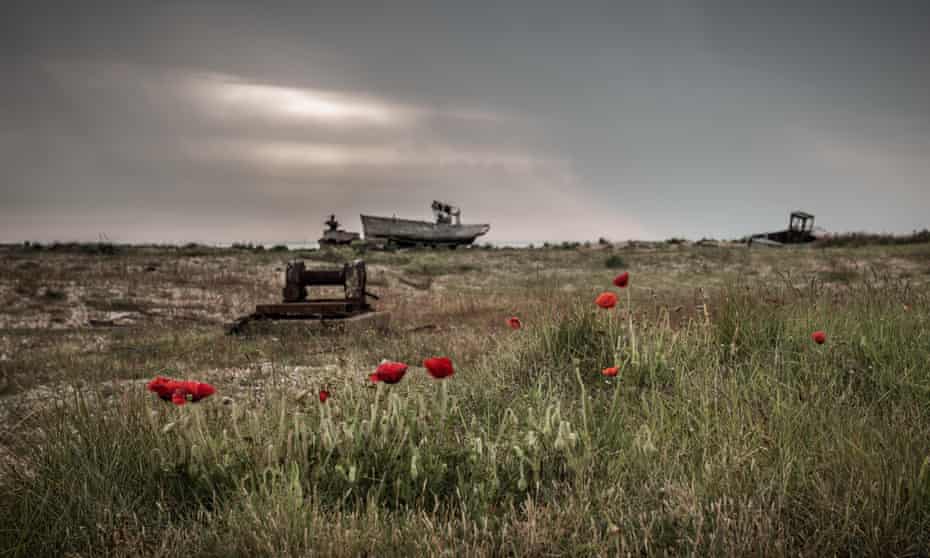
While I wanted to venture further than the Gray’s Inn Road, the idea that wonder, mystery, awe, new worlds and undiscovered realms might lie a train ride away, rather than on a carbon-intensive flight to the far side of the globe, opened up possibilities for a different type of travel. What other unlikely landscapes might be lurking out there, ready to snatch the unwary traveller into the outlandish?
In fading light, we walked to where the stony plain met the waves, past hunched fishers and the cannibalised wrecks of boats. The lighthouse beam probed the sky with the power of 100,000 candles. As night came on, the almost-desert merged with the greying sea.
We found ourselves in an open space that expanded on and on, populated by the blinking lights of trawlers floating off the coast and the right-angled monoliths of Dungeness A and Dungeness B shimmering inland. Beneath our boots the shingle shifted like a bed of atoms. Millions of years stretched between the flints whose striking once sparked fire and the nuclear power station whose waste will last for a million more, a monument to eternity and to extreme fragility. For a moment in the dark we stood between the past and the future; between what lay beneath our feet and what looms on the horizon.
Finding wonder on our shores – more unlikely UK landscapes
Temperate rainforest
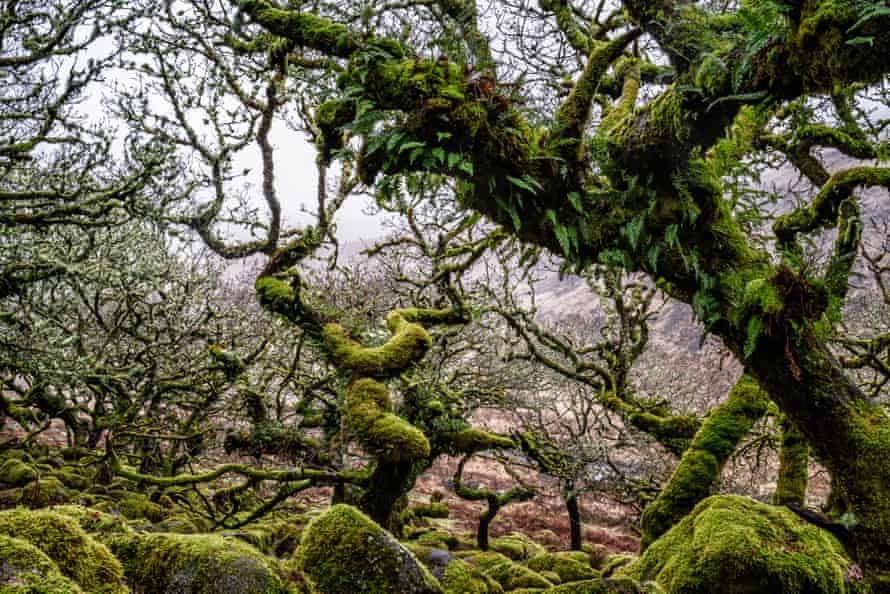
A dwarf jungle of contorted green limbs clustered with mosses, lichens and ferns, Wistman’s Wood on Dartmoor is among Britain’s best-known examples of temperate rainforest. The clue is the presence of epiphytes – plants that grow on other plants. Patches of temperate rainforest can also be found in Wales, on the Atlantic coast of Scotland, and in Cornwall and Cumbria. Rainforests seem to belong to somewhere far away, but their existence should hardly be surprising in a place where it rains all the time.
Arctic tundra

The Cairngorm plateau, the highest and coldest upland area in Britain, is defined as “arctic-alpine tundra”, meaning it is climatologically and ecologically closer to Scandinavia, Siberia or Alaska than it is to the neighbouring Highlands. Shaped by glaciers in the last ice age, the tundra’s weave of mosses and lichens support Arctic species such as Lapland bunting, snow bunting and dotterel, as well as Britain’s only free-roaming herd of reindeer.
Fjord
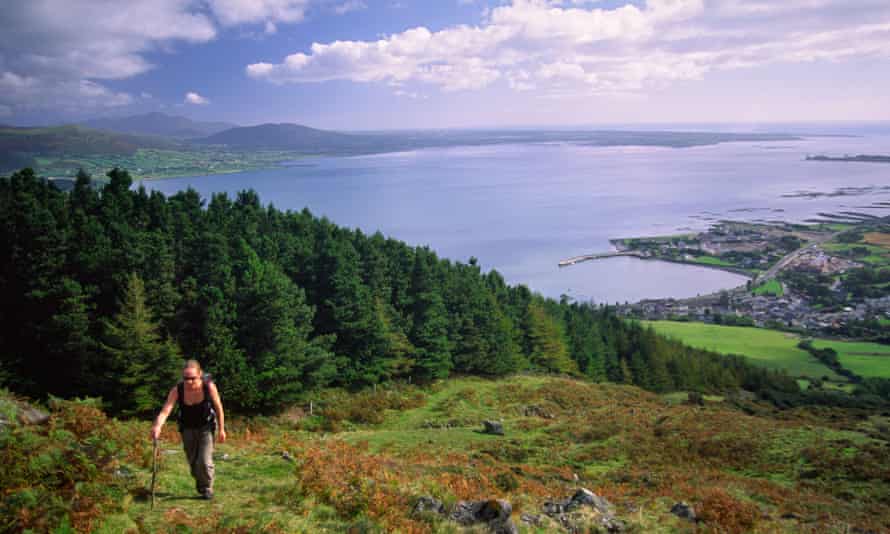
Fjords – narrow, steep-sided inlets carved out of the rock by glaciers – are indelibly associated with the coastline of Norway, but a fjord also forms part of a UK border: the 10-mile-long Carlingford Lough, which separates County Down in Northern Ireland from County Lough in the Irish Republic. It may not have the cliff-sided drama of the Norwegian fjords but it is a reminder of the great glaciers that covered much of the region in the last ice age, and once formed a frozen bridge to Scandinavia and Eurasia.
This is an edited extract from the introduction of Nick Hunt’s new book Outlandish, (John Murray, £16.99) published on 27 May





